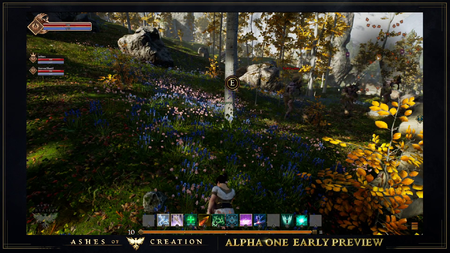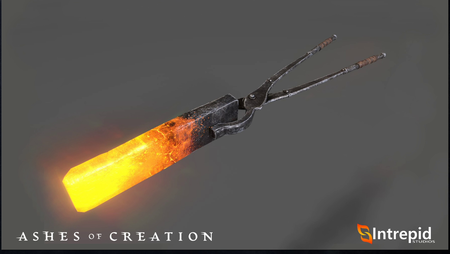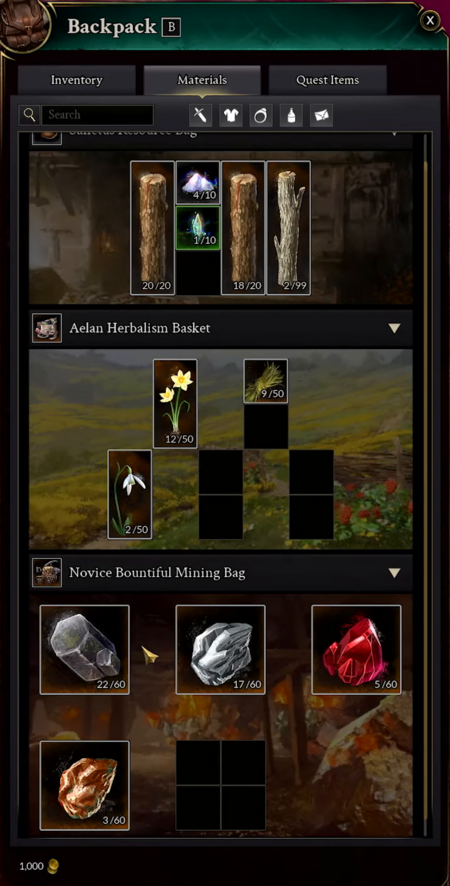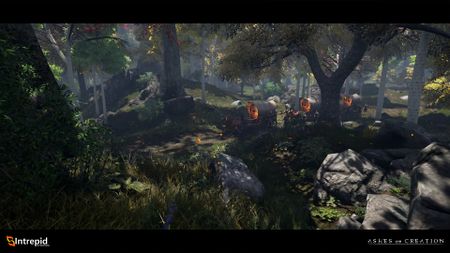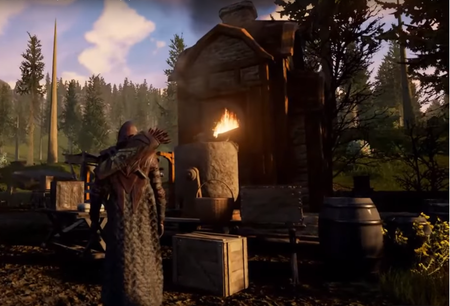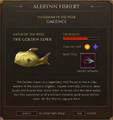| Glorious Wiki readers. We are adding the Midnight Magic video and livestream to the wiki. We appreciate your patience as we process the new and updated information! |
Diferenças entre edições de "Gathering"
(Add section) |
|||
| Linha 17: | Linha 17: | ||
{{Resource locations}} | {{Resource locations}} | ||
| − | === Surveying | + | === Surveying === |
| − | {{Surveying | + | {{Surveying}} |
| + | |||
| + | === Land management === | ||
| + | |||
| + | {{Land management}} | ||
=== Artisan tools === | === Artisan tools === | ||
Revisão das 18h09min de 29 de outubro de 2022
Coleta é uma das classes artesãs no Ashes of Creation.[3][4]
- Recursos coletáveis são descobertos por tentativa e erro, e aprendendo seus visuais.[3]
- A coleta requer a criação e o uso de ferramentas.[5][6]
- Coletar recursos dentro da Zona de influência (ZI) de uma base contribuirá ao crescimento da experiência desta base.[3]
- Certos coletáveis de nível baixo terão uma progressão nivelada à fabricação de nível mais alto.[7]
Certos coletáveis de nível baixo vão ter uma progressão nivelada até a fabricação de nível mais alto. Então por exemplo, se eu estiver coletando... folhas da flor da pétala azul para fabricar um pigmento que vai ser usado no desenvolvimento de uma túnica que eu posso vestir no nível um, aí talvez eu precise coletar elas para poder fabricar os pigmentos para fabricar um pigmento maior que pode estar presente na fabricação de um item de nível mais alto. Então vai ser tipo uma progressão nivelada para que os materiais tenham relevância ao longo dos níveis diferentes de fabricação; e isso é importante de um ponto de vista de estabilidade econômica. Você precisa ter uma procura em camadas de um ponto de vista de oferta para que jogadores que tenham interesse em colecionar e coletar esses materiais sejam relevantes quando os itens de níveis mais altos são fabricados.[7] – Steven Sharif
Profissões de coleta
Artisan mastery
| Artisan level | Artisan certification | Profession limit per character |
|---|---|---|
| 1-10.[11][12] | Novice.[8][13] | 22.[8][9] |
| 10-20.[14][12] | Apprentice.[8] | 5.[8][9] |
| 20-30.[14] | Journeyman.[8][10] | 4.[8][9] |
| 30-40.[14] | Master.[8][10] | 3.[8][9] |
| 40-50.[14][15] | Grandmaster.[8][10] | 2.[8][16][9] |
Artisan progression occurs based on experience (repetition of tasks) as well as achievements of certain benchmarks within each artisan branch (Coleta, Processamento and Fabricação).[18][19] Progression in each artisan profession is per-character.[20][21][22][23]
- All 22 professions, the players get to be novice of; and then it starts narrowing from there. So, after that you'll only be able to be apprentice of five things. You can be a journeyman in four things. You can be a master in three things; and you can be a grandmaster in two things. So you'll need to narrow, but you can also diversify to support the professions that you want to first push further in.[9] – Kory Rice
- Progression to each "tier" within a profession grants skill points that can be utilized in a character's artisan skill tree.[25]
- Artisan certification quests must be completed to gain proficiency in that tier of artisan progression.[18] Completing certification unlocks benefits for that profession, such as artisan tools for gathering professions and recipes for crafting professions.[26][27]
- There are limits to the number of professions at each certification tier across the three artisan branches.[8][16][28][9][29] For example: a character may only ever be a Master in up to 3 professions and Grandmaster in up to 2 professions across all artisan branches.[8][16]
- Grandmaster artisans can max out their entire profession skill tree, but a character can only be a grandmaster of up to two professions.[30]
- Achieving an artisan certification in a profession also implies that the character also achieved any lower-tier certifications up to that point.[31]
- If you are grand master in that profession you can max out the entire tree. But you can only grand master 2 things.[30] – Kory Rice
- Choosing a specific path in the skill tree allows the player an opportunity to specialize in a certain area. This encourages player inter-dependency, enhancing the artisan experience.[32]
- Progression within artisan classes does not directly relate to progression in a character's adventuring class, but there are requirements that take into account dangers, locations, toolsets, and surveying options that are dependent on adventuring level.[33][34][35]
- Characters gain XP as they progress their professions.[36][27]
- It should be expected that some artisans will have significantly higher artisan level than their adventuring level.[36][33]
- Q: In regards to character level and artisan level. We know that currently there are two separate things. That being said, what prevents a player from staying level one and partying up with a level 50 player to then gather level 50 resources in the high zones? That way, anyone who wants to take those resources will have to kill the gatherer who is level one and get a large amount of corruption for killing a level one as a level 50.
- A: Gathering higher level resources requires significant advancement within a particular profession for that gatherable resource. So, if I'm a Miner and I want to access the highest possible mineral, I need to be a master miner; and in order to achieve the master minor status I am going to be gaining adventuring level experience through that process, because many of those quest lines, many of those achievements are facilitated through quest lines. Some of those quest lines interface with adventuring difficulties that are out in the wild at certain levels. So that's going to predicate me- that's going to be a predicate for me to achieve a certain level in order to complete some of these quest lines and achieve that master status. So you will you will likely not see the ability of a level one alt character having the access to high level mineral mining, or any other type of gatherable out there.[33] – Steven Sharif
Recursos
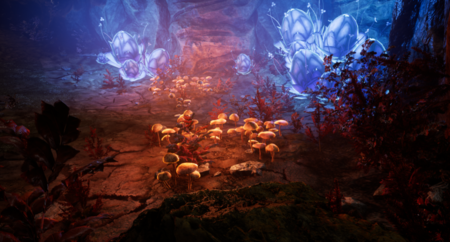
We want our players to have a reason to explore the wilderness, to travel with purpose, and much of that will be driven by our resource system. Transporting these goods might just be more difficult than gathering them. Our regional market system allows players to participate in creating pocket economies that will reinforce the stability of goods in particular regions.[37]
Gatherable resources (also known as raw materials, gatherables, and harvestables) occur in locations where you would expect them to be organically.[38][39]
- Lower level resources will be abundant. Higher level resources that are gatherable by Apprentice level or higher artisans will spawn randomly but in places that make sense for that type of resource. Surveying is a mechanic that solo or group players can utilize to track these resources down.[38]
- We want to be able to spawn stuff randomly and we want to put it in places in the world that will make people travel and bolster up our local player-to-player economies: have people actually be out in the world looking for stuff and not standing in the same place waiting for a tree or a flower to respawn over and over again. So, we're having the best of the both Worlds where we have our lower tier stuff that will fill out the base look of our world, so that it's always looking good; and then the higher tier stuff, from apprentice onward, will always spawn randomly in places that we've deemed look good and make sense for what that thing is. So, surveying is a way that you can track that stuff down. It will help you find places, will help you find particular resources, will help you find resources at a certain rarity; and so it should be something you could do as a gatherer on your own, or group up with other people to bolster up the power of your survey, or the range or reach of it.[38] – Kory Rice
- Certain resources will only be gatherable for a limited time during specific story arcs.[40]
- You want to take advantage of the limited time you have during the story arcs to get some of these rare resources for crafting things.[40] – Jeremy Gess
- Some resources are only gatherable at specific times of the day or night.[45]
- The location the resource was found can affect the benefits, bonuses, and other characteristics of that resource.[46]
- Players drop resources and other items upon death, based on their applicable death penalties.[49][50][51][52]
- Resources looted from caravan wreckages become stolen resources.[53][54]
- Resources do not expire or degrade over time.[55]
- We don't want to create an environment I feel where you're having to micromanage each of the resources that are very vast in our game. We have 100 plus material system where you're having to play whack-a-mole with managing those things... I don't see the value in it.[55] – Steven Sharif
- Raw materials (gatherable resources) are not to be confused with crafting materials (processed goods).[56][57]
Resource locations
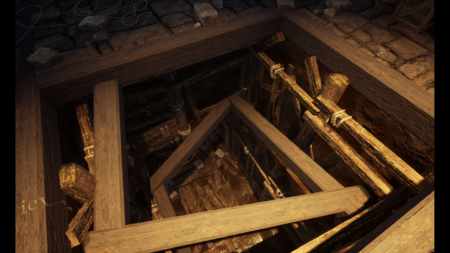
Players will be able to move resources and set up shop in other areas to take advantage of the varied markets. With resources spawning dynamically, certain regions will naturally become important trading hubs for the transportation of goods throughout the world.[37]
The location a resource is found can affect its benefits, bonuses, and other characteristics of that resource.[46]
- Lower level resources will be abundant. Higher level resources that are gatherable by Apprentice level or higher artisans will spawn randomly but in places that make sense for that type of resource. Surveying is a mechanic that solo or group players can utilize to track these resources down.[38][47][48]
- Some resources will exist as a cluster (also called vein gatherables). These will last until the full resource is depleted.[59][47][48][39][60]
- Like a large mine that's present and has a vein of mithril ore in it, or a herd of some type of animal that you can collect fur or wool from.[48] – Steven Sharif
- Once a vein resource is depleted from one location it may respawn in the same location or somewhere else, depending on the type of resource.[48][39][61]
- There will be moving resources such as herds of animals that are constantly moving around the world.[59][61]
- Herds are a source of certain types of wild gatherables but they're in animal form and they're animated; and they exist in a group of the golden fleece sheep that might only spawn very rarely in certain hillsides; and only during spring. And if you can find that vein so to speak of resource you can interact with the herd and you can gather from them.[59] – Steven Sharif
- Corrupted areas house corrupted resources that are necessary components for certain crafting recipes.[62][40]
- Certain types of resources will have a corrupt state... We have a Spirit Bloom, which is a harvestable herbalism plant, but when a Zone becomes corrupt you can potentially yield Corrupted Spirit Blooms; and those are necessary components of certain crafting recipes.[62] – Steven Sharif
- Resources respawn on a cooldown basis.[39]
- Resources won't be locked to the node system.[39]
- Starting resource points may be different on each server.[64][65]
Surveying
Surveying plays a key role in helping gatherers track down and identify resources that spawn in particular locations through the use of surveying tools.[38][66][67]
- Surveying is something that we're trying to use for gatherers to really interact with the things that we want to do with our dynamic world... Surveying is a way that you can track that stuff down. It will help you find places, will help you find particular resources, will help you find resources at a certain rarity; and so it should be something you could do as a gatherer on your own, or group up with other people to bolster up the power of your survey, or the range or reach of it.[38] – Kory Rice
- Surveying can also identify the types of resources that spawn statically within an area and also provides information about the seasons and locations they spawn in.[66]
- Surveying is a way that players can check out an area for resources. Players can learn where resources are that are static and that grow back in the same location; but we'll also have resources and Ashes that can spawn anywhere, so surveying will help players locate those those resources. So if they're looking for something specific they can hunt them down. Surveying will also allow players to uncover hidden resources that players wouldn't be able to see with their with their naked eye. Another thing that a surveying would provide is some of the information that we're talking about before, like for instance if you survey- and inside of your survey area there's plants, you might learn what season that plant likes to grow in. You might learn whether it likes to be watered during the winter versus how it likes to be watered in the summer.[66] – Kory Rice
- Surveying can help uncover hidden resources that are not visible to the naked eye.[66]
- Artisan progression unlocks higher level surveying tools that enable better identification of gatherable resources within a location.[66]
- Unlocking surveying pylons allows the gatherer to adjust the shape and extend the area of their survey.[66]
- You'd work with a surveying tool; and you set the surveying tool down, and that tool would have a specific area in which it's able to uncover and extract information about the resources that are in the area. As a starting out gatherer you might end up with one of the tools, but as you as you progress and become more proficient with using the tool you might be able to set up additional pylons and extend the area of your survey. That allows you to start making shapes and having more strategic areas that you're surveying. If you could connect multiple pylons to create a shape, maybe you could follow the twisting caverns of the cave. Maybe if you're out in the open like we are here you could just try and make yourself a nice widened shape to scan as much of the area as possible. So it'll be up to the player to be tricky with their surveying tool to try and get the most efficiency out of their survey.[66] – Kory Rice
Land management
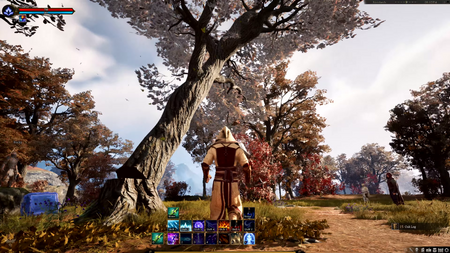
As you draw resources from your surrounding area- what type of effect does that have on the land; and then also how effectively can you draw those resources without having such a deleterious effect on the land, which might impact future resource gathering for some period of time: And it makes relevant the movement of these players who are collecting these goods from the environment, that they actually cannot always just do so in one particular area, as the land management begins to degrade. So it actually encourages movement across the world to discover new areas that might not be as perturbed as the ones you're coming from. It's a very interesting idea. It's something that we're going to be prototyping in Alpha 2 and getting feedback on and testing.[67] – Steven Sharif
Land management mechanics are present for gathering artisans.[69][67]
- The spawn rate of resources in a given area is influenced by how players are interacting with those resources.[69][67]
- Drawing excessive amounts of resources may have a deleterious effect on the land health value for that area.[69][67]
- Actions like ridding an area of invasive species or performing crop rotations on freehold farms may have a positive effect on that area's land health value.[69]
- Defeating certain world bosses or mobs can positively impact the respawn rates of resources and animals in their vicinity.[70]
- It could be could be positive or negative, or both simultaneously. So the land health value ties into the health of a specific ecosystem; and the ecosystem can scale with different segment sizes of the world, or the world itself: A biome, maybe a node, maybe the player's freehold. And the things that a player does in those areas will contribute to health in a positive or negative way. So doing something like rotating your crops might increase the health of the land because that's considered something good to do; and maybe apprehending or removing poachers that are over hunting a certain species could be helpful to the health of the land. Maybe the mayor puts out a request for players to try and get rid of invasive species that are plants- maybe they're overgrowing weed and it's stopping other valuable plants from growing.[69] – Kory Rice
- The spatial inventory system is intended to mitigate the potential for players to diminish land management scores by stripping resources from particular zones.[71]
- There's a particular reason for why that inventory system is intended to exist within Ashes; and part of that is from the aspect of everything in the world is gatherable and there is a land management system that exists behind those gatherable things. The land management system takes into account how players are interacting with the environment: how many of the resources they're withdrawing from the world; and that decreases the spawn rate within certain localities as those things go too high. So there can be a degree of economic warfare by sending players out into zones where you want to mitigate collection of resources. You send your players out there to take all those resources and then that diminishes the land management score of that particular zone.[71] – Steven Sharif
Ferramentas artesanais
Classes artesãs de coleta requerem a criação e o uso de ferramentas de coleta que permitem a coleta de recursos.[5][6]
- Progressão na classe artesã da coleta abre ferramentas de coleta de nível mais alto que permitem a coleta de recursos de nível mais alto.[73]
- Um coletor com proficiência máxima abrirá Master toolsets, o que lhe concederá acesso aos coletáveis da mais alta qualidade.[47]
- Ferramentas terão durabilidade e vida útil.[47][74]
- Artesãos não precisarão depender de outras árvores para fazer suas ferramentas.[5]
As ferramentas avançam na árvore de artesanato, então a sua capacidade de coletar, processar ou fabricar vai precisar das ferramentas equivalentes necessárias naquele estágio de criação para realizar a sua tarefa. Então você não poderia minar cobre e mithril com a mesma ferramenta.[6] – Steven Sharif
O processamento requere blueprints para a construção de edificações que são necessárias para processar recursos.[5]
- A fabricação requere a aquisição de receitas para fabricar itens.[5]
List of tools
- Apprentice Herbalism Sickle
- Apprentice Lumberjacking Axe
- Axe
- Beginners Pole
- Copper Pickaxe
- Crude Herbalism Sickle
- Cultivator
- Diamond Tipped Pickaxe
- Fishing poles
- Grand Master Mining Pickaxe
- Intermediate Pole
- Iron Chopper
- Iron Pickaxe
- Journeyman Lumberjacking Axe
- Master Lumberjacking Axe
- Novice Herbalism Sickle
- Novice Lumberjacking Axe
- Novice Mining Axe
- Pickaxes
- Scythes
- Shears
- Soil Knife
- Steel Pickaxe
- Tiller
Resource quality
Recursos will have differing tiers of quality for the same resource type.[48] This is somewhat similar to Star Wars Galaxies.[76]
- Gatherers who are more advanced in their artisan tree will unlock higher level harvesting tools that have a greater chance of collecting higher quality resources or proccing a greater quantity.[48][73][77]
- You will have an opportunity to proc certain qualities based on your progression in the Artisan tree. So if you are a gatherer; and as you advance in your gathering, you'll have a higher opportunity to collect better resources.[77] – Steven Sharif
Resource extractors
Resource extractors are potential constructions that can collect resources over time.[78][79]
- Available to node citizens who own a freehold near a "resource center".[79]
- Requires several people to construct.[79]
- Moving resources from the extractor will likely require a caravan.[79]
List of resources
- Aged Aelan Whiskey Barrel
- Ancient Aelan Wine Barrel
- Ancient Aelan Wine Flagons
- Animal byproducts
- Animals
- Apples
- Armament Cases
- Barrels of Fish
- Beef
- Bins of Stone
- Carton of Flasks
- Case of Dunir Tools
- Case of Everburn Scented Candles
- Case of Kaelar Wooden Soldiers
- Casks of Wine
- Cloth Bolts
- Commodities
- Cords of Wood
- Corrupted resources
- Crates of Lumber
- Crop Bundles
- Crops
- Dyed Fabrics
- Eggs
- Fish
- Gems
- Hardy Rations Shipment
- Harvest Bundles
- Hauling Wagons
- Herb Bushels
- Herbs
- Lightly Seasoned Meat
- Livestock
- Lumber
- Meal Packs
- Meat Racks
- Milk
- Mushrooms
- Node commodities
- Ore
- Packs of Fresh Produce
- Palettes of Stonework
- Pig Hide
- Pig Meat
- Resource locations
- Resource types
- Rolls of Leather
- Salt Cured Meat
- Seeds
- Stacks of Ingots
- Stacks of Pelts
- Stolen resources
- Structural Materials
- Trained Draft Beasts
- Wool
Artisan gear
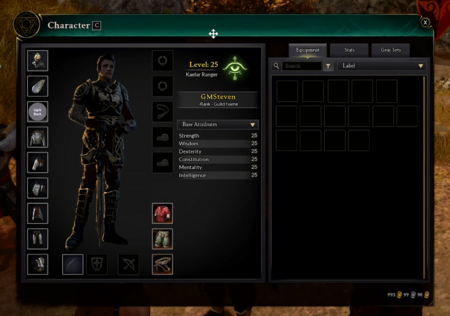
There's gear for all of the different crafting, gathering, and processing professions that'll help you do those different trades.[81] – Kory Rice
Artisan gear boosts artisans in their gathering, processing, or crafting professions.[81][82][83]
- Profession NPCs sell lower level artisan gear.[84] Higher level gear is crafted by players.[82]
- There are three artisan gear slots on a character's paper doll UI.[80] Previously these was referred to as undergarment slots.[82]
- Artisan gear and adventuring gear do not need to be swapped for either to be effective when they are equipped on a character, but players will be able to toggle gear visibility between their adventuring and artisan gear.[85][80][82]
- If you want to be seen as wearing the herbalists outfit, you're still going to have your adventuring gear present and on the character, and benefiting from the stats that are conferred by them; and vice-versa.[85] – Steven Sharif
- Gathering tools and artisan gear have stats that affect gathering rates and yields.[86][87]
- Gear for artisans are going to live alongside your adventuring gear. So you will currently- the approaches, and we'll test this but currently- the approach is you'll have artisanship oriented gear. This might be beneficial for your gathering; it might be beneficial for your processing, or crafting, or whatever it is- your profession. Essentially you will craft that gear, you will equip that gear, it'll live almost as a undergarment slot so to speak; and then you can activate that and it will show the appearance if you wish during the activation when you gain the benefit from the from the gear itself; and then could disappear afterwards and go back to your adventuring gear. That's the current approach. We're going to play with that a little bit. There's some discussion and disagreement on the team about how we do that, but our hopes are for Alpha two, we will have I think a couple of sets at least. We're demonstrating all of the artisanship from gathering to processing to crafting in limited fashion in Alpha 2 want to have that gear present to play with this approach.[82] – Steven Sharif
Loot tagging
Looting rights (also known as Loot tagging) is based on a blended tag and damage done system.[88][89]
- The first party to obtain a tag (on a mob or boss) will gain an approximately 5-10% edge over competing parties in terms of the total damage done when determining looting rights.[88][89]
- These numbers will be balanced based on testing.[88]
- At the end of the fight, the party with the highest damage done, including first tagging bonus, will be granted looting rights.[88][89]
- We have a blended approach of damage done and a tag benefit. So if you tag the boss first, or you tag the loot- whatever the loot target is first- you're gonna get a benefit in the damage overall determination. So if you need to have 51% of damage done in order to qualify your raid, or the plurality of damage done if there's even three or four raids, then tagging first might give you a five or ten percent edge. We'll play with that number- balance it based on testing, but generally that's our approach in competing loot rights[88] – Steven Sharif
- Q: If looting rights are based on a blended tag and damage done system, will there be any mechanics in place to ensure roles like tanks and healers have an equal shot even when they haven't dealt as much damage?
- A: That's the reason for the blended approach. The reason that we're doing a hybrid system between tag and damage done is for the purposes of those classes who may not be as DPS oriented as other classes. The tag system- all classes are going to have a sprinkling of immediate effects- of instantaneous casts and they can use that to tag a target, and that'll give them a modifier on the looting rights: So plus 10 or plus 15 will balance that, but it'll give them plus 10 to 15 on overall damage done if they tag the target and then their damage will make up the remainder of that percentage completion. So if I do 50 damage to a target but someone else has the tag I'm not going to be able to claim that looting right. They'll have done the other 50 plus 10 or 15.[90] – Steven Sharif
Artisan supply chain
Artisans within Ashes of Creation must choose a path in their artisan skill tree. This inter-dependency establishes a supply chain from raw materials to finished product.[91][57] Each stage of the chain may require caravans to transport goods from one artisan to another.[32]
- Obtaining raw materials:[92]
- Refining the raw materials with the Processamento profession.[57]
- Fabricação the finished product using its crafting recipe.[57]
As a crafter you're going to want to know where certain recipes can be fulfilled; which nodes have the capability of creating what you've processed material that you've gathered for; and then you're going to want to plan out your route to either transit the goods there or make sure that you're situated in the area so that you can go out collect and build in that area as well. So there's a lot of planning that's going to be necessary.[95] – Steven Sharif
Processamento
O processamento é uma das classes artesãs no Ashes of Creation.[56]
- O processamento envolve o refinamento de matérias-primas obtidas na coleta e pela desconstrução de itens.[56]
O processamento requere blueprints para a construção de edificações que são necessárias para processar recursos.[5]
- Edificações podem colocadas em um alódio para processar recursos.[56]
Fabricação
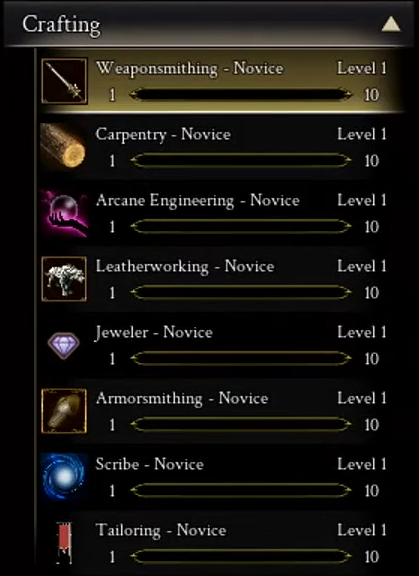
Crafting and gathering is a very important component of the economy that players will have direct control over. Whether you wish to build a sprawling plantation around your house, or wish to travel the vast wilderness in search of treasure and resources. There are many tools available to the crafters of our world. Regardless of how you gather your resources, we believe that every item that exists in the world should in some way reflect its creator. As such, there will be extreme versatility in our crafting system – giving crafters the ability to create unique items that represent their strengths and weaknesses.[37]
Fabricação is one of the artisan classes in Ashes of Creation. It is a driving force for the game economy.[37][96]
- Crafting in Ashes of Creation is recipe-based not RNG based.[97][98][5][99][100]
- Crafting stations are located on freeholds or within nodes.[101][102]
- Higher tier crafting stations are unlocked with node progression.[103]
- Players can only craft up to journeyman level on freeholds.[10]
- Top tier crafting stations are present at all node types, however Academic nodes offer additional bonuses to crafting performed there.[104]
- Artisan gear will enable crafting of stronger items.[82][83]
- Crafting times may vary between professions but the bulk of the time spent in the artisan system resides in the processing branch.[105]
- Not every crafting profession is able to craft consumables.[106]
- The developers are seeking feedback on the addition of a gameplay layer to crafting that determines the outcome based on the player's performance.[107][108]
- The developers are debating whether this occurs on a craft-by-craft basis or a one-off basis following after a new level of certification has been achieved.[107]
- This will be revealed when it is ready to be showcased.[107]
- There will not be a labor or energy system in Ashes of Creation.[109]
- There is no labor or energy system in Ashes. However, that's not to say that crafting will not be difficult. Crafting is very difficult; but it is because it is difficult that it will be very rewarding as well.[109] – Steven Sharif
Timeline
Classes Artesãs estão programadas para lançar no Alpha-1.[110]
Arte
2023-12-03 2022-10-29 2022-10-29 2020-03-28
Community guides
Ver também
Referências
- ↑
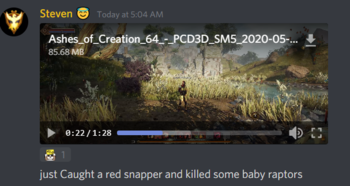
- ↑ Transmissão ao vivo, 2020-03-28 (48:31).
- ↑ 3.0 3.1 3.2 3.3 Transmissão ao vivo, 2017-09-03 (10:48).
- ↑

- ↑ 5.0 5.1 5.2 5.3 5.4 5.5 5.6 Entrevista, 2020-03-27 (9:00).
- ↑ 6.0 6.1 6.2 Entrevista, 2018-05-11 (38:25).
- ↑ 7.0 7.1 Podcast, 2018-05-11 (1:00:07).
- ↑ 8.00 8.01 8.02 8.03 8.04 8.05 8.06 8.07 8.08 8.09 8.10 8.11 8.12 8.13

- ↑ 9.0 9.1 9.2 9.3 9.4 9.5 9.6 9.7 9.8 9.9 Vídeo, 2023-11-30 (37:12).
- ↑ 10.0 10.1 10.2 10.3 10.4 Development Update with Freehold Preview.
- ↑

- ↑ 12.0 12.1 Vídeo, 2023-11-30 (9:36).
- ↑ 13.0 13.1 Transmissão ao vivo, 2023-06-30 (50:07).
- ↑ 14.0 14.1 14.2 14.3 Podcast, 2023-12-03 (14:14).
- ↑ Podcast, 2023-12-03 (2:53).
- ↑ 16.0 16.1 16.2
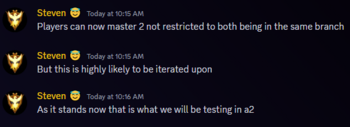
- ↑ Vídeo, 2023-11-30 (23:20).
- ↑ 18.0 18.1 Vídeo, 2023-11-30 (16:40).
- ↑ Entrevista, 2021-02-07 (36:38).
- ↑

- ↑ Transmissão ao vivo, 2022-04-29 (1:13:00).
- ↑ Transmissão ao vivo, 2019-07-26 (1:09:46).
- ↑ Transmissão ao vivo, 2017-05-24 (32:07).
- ↑ Podcast, 2023-12-03 (10:22).
- ↑ Vídeo, 2023-11-30 (26:38).
- ↑ Podcast, 2023-12-03 (17:10).
- ↑ 27.0 27.1 Vídeo, 2023-11-30 (36:00).
- ↑
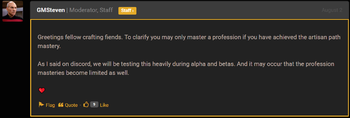
- ↑

- ↑ 30.0 30.1 Podcast, 2023-12-03 (6:23).
- ↑

- ↑ 32.0 32.1 Transmissão ao vivo, 2017-05-10 (6:12).
- ↑ 33.0 33.1 33.2 Transmissão ao vivo, 2023-04-07 (1:00:55).
- ↑ Transmissão ao vivo, 2022-10-28 (1:32:38).
- ↑ Transmissão ao vivo, 2020-07-31 (1:31:11).
- ↑ 36.0 36.1 Podcast, 2023-12-03 (15:05).
- ↑ 37.0 37.1 37.2 37.3 About Ashes of Creation.
- ↑ 38.0 38.1 38.2 38.3 38.4 38.5 Vídeo, 2023-11-30 (28:22).
- ↑ 39.0 39.1 39.2 39.3 39.4 39.5 Transmissão ao vivo, 2017-05-08 (54:26).
- ↑ 40.0 40.1 40.2 Vídeo, 2023-03-31 (16:42).
- ↑ Transmissão ao vivo, 2022-05-27 (55:47).
- ↑ Vídeo, 2022-05-27 (15:50).
- ↑ Transmissão ao vivo, 2017-05-08 (20:27).
- ↑
- ↑ Vídeo, 2023-11-30 (34:36).
- ↑ 46.0 46.1 Transmissão ao vivo, 2023-04-28 (1:24:36).
- ↑ 47.0 47.1 47.2 47.3 47.4 47.5 Transmissão ao vivo, 2020-07-31 (1:05:58).
- ↑ 48.0 48.1 48.2 48.3 48.4 48.5 48.6 Transmissão ao vivo, 2020-07-25 (1:04:50).
- ↑ Transmissão ao vivo, 2021-03-26 (1:07:33).
- ↑

- ↑ Podcast, 2017-05-05 (43:05).
- ↑ Entrevista, 2020-07-18 (27:11).
- ↑ Transmissão ao vivo, 2023-10-31 (1:18:33).
- ↑

- ↑ 55.0 55.1 Transmissão ao vivo, 2023-03-31 (1:19:26).
- ↑ 56.0 56.1 56.2 56.3 56.4 Transmissão ao vivo, 2017-05-05 (34:15).
- ↑ 57.0 57.1 57.2 57.3 57.4 Transmissão ao vivo, 2017-05-10 (8:22).
- ↑
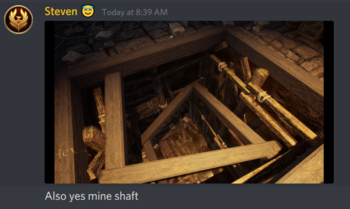
- ↑ 59.0 59.1 59.2 Transmissão ao vivo, 2022-05-27 (1:00:23).
- ↑ Unreal Engine Interview, 2017-05-23.
- ↑ 61.0 61.1 Transmissão ao vivo, 2019-12-17 (1:14:42).
- ↑ 62.0 62.1 Transmissão ao vivo, 2023-03-31 (59:10).
- ↑
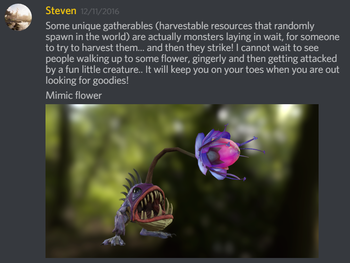
- ↑

- ↑ Transmissão ao vivo, 2017-05-19 (37:03).
- ↑ 66.0 66.1 66.2 66.3 66.4 66.5 66.6 Vídeo, 2022-10-28 (10:52).
- ↑ 67.0 67.1 67.2 67.3 67.4 Transmissão ao vivo, 2022-04-29 (25:16).
- ↑ Vídeo, 2023-06-30 (21:05).
- ↑ 69.0 69.1 69.2 69.3 69.4 Vídeo, 2022-10-28 (14:33).
- ↑ Transmissão ao vivo, 2023-05-31 (42:06).
- ↑ 71.0 71.1 Podcast, 2023-07-15 (22:57).
- ↑ Transmissão ao vivo, 2020-04-30 (54:33).
- ↑ 73.0 73.1 Transmissão ao vivo, 2020-04-30 (53:11).
- ↑ 74.0 74.1

- ↑ Vídeo, 2023-11-30 (30:19).
- ↑
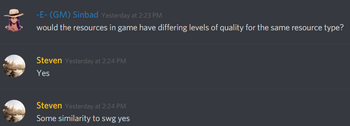
- ↑ 77.0 77.1 Entrevista, 2018-10-20 (2:13).
- ↑

- ↑ 79.0 79.1 79.2 79.3 Transmissão ao vivo, 2017-05-30 (10:24).
- ↑ 80.0 80.1 80.2 Vídeo, 2023-11-30 (19:06).
- ↑ 81.0 81.1 Vídeo, 2023-11-30 (5:47).
- ↑ 82.0 82.1 82.2 82.3 82.4 82.5 82.6 Transmissão ao vivo, 2022-06-30 (1:17:34).
- ↑ 83.0 83.1 Transmissão ao vivo, 2021-03-26 (1:06:50).
- ↑ Vídeo, 2023-11-30 (12:05).
- ↑ 85.0 85.1 Transmissão ao vivo, 2023-11-30 (1:37:49).
- ↑ Vídeo, 2023-06-30 (3:14).
- ↑ Vídeo, 2022-10-28 (26:14).
- ↑ 88.0 88.1 88.2 88.3 88.4 Transmissão ao vivo, 2022-03-31 (1:23:06).
- ↑ 89.0 89.1 89.2 Transmissão ao vivo, 2020-07-25 (1:24:56).
- ↑ Transmissão ao vivo, 2022-06-30 (1:16:22).
- ↑ Entrevista, 2020-07-20 (20:17).
- ↑ 92.0 92.1 92.2 92.3 92.4 Transmissão ao vivo, 2017-05-08 (20:41).
- ↑ Transmissão ao vivo, 2017-07-18 (38:30).
- ↑ Transmissão ao vivo, 2017-05-26 (26:00).
- ↑ Entrevista, 2018-05-11 (24:18).
- ↑
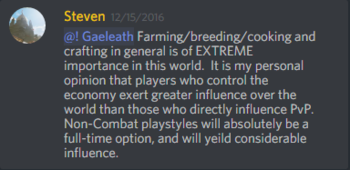
- ↑ Transmissão ao vivo, 2023-11-30 (1:58:55).
- ↑ Vídeo, 2023-11-30 (3:49).
- ↑ Transmissão ao vivo, 2017-05-05 (20:41).
- ↑

- ↑ Transmissão ao vivo, 2020-01-30 (1:38:26).
- ↑ Transmissão ao vivo, 2017-05-12 (1:00:18).
- ↑ Entrevista, 2020-07-19 (6:38).
- ↑ Transmissão ao vivo, 2023-12-19 (1:50:51).
- ↑ Podcast, 2021-04-11 (40:20).
- ↑ Transmissão ao vivo, 2023-11-30 (2:00:22).
- ↑ 107.0 107.1 107.2 Transmissão ao vivo, 2023-11-30 (1:40:11).
- ↑ Transmissão ao vivo, 2022-10-14 (35:22).
- ↑ 109.0 109.1 Entrevista, 2018-10-20 (2:31:39).
- ↑ Podcast, 2018-05-11 (59:25).
